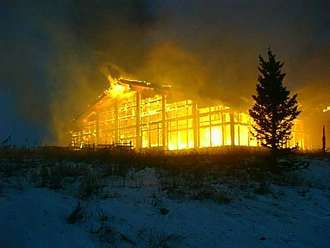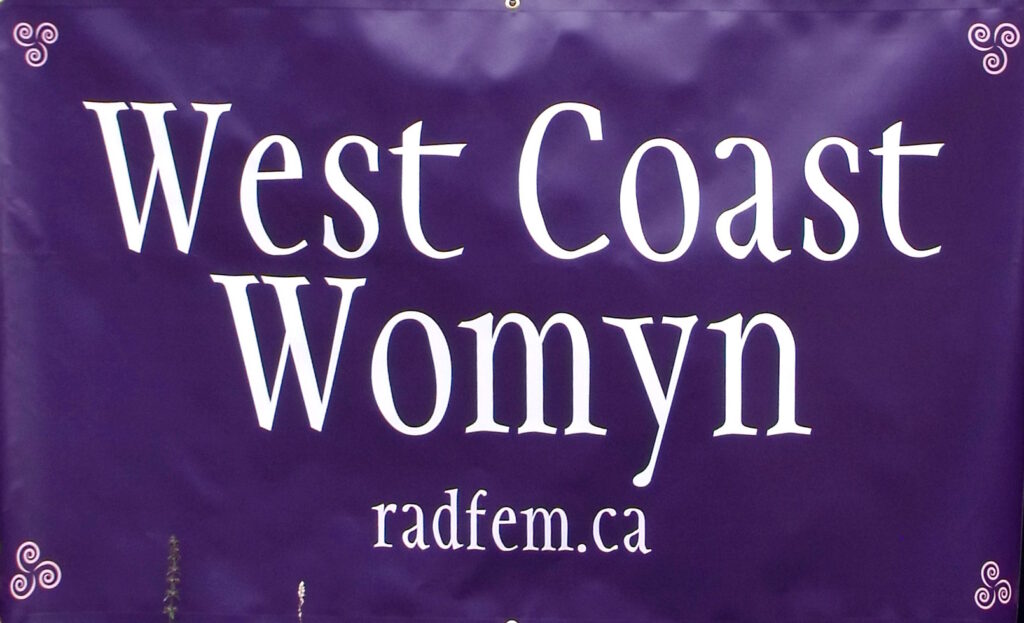
Logging in Clayoquot Sound, circa 1993
The deal that ended mass protests in Clayoquot Sound was fatally flawed. Now the Big Greens are calling foul.
Wed, 2 Aug 2006
In the mid-1990’s. almost a thousand people were arrested for blocking logging roads leading to untouched rainforest on the west coast of Vancouver Island, British Columbia. What started as a grassroots campaign later escalated to a markets campaign by Greenpeace and ForestEthics targeting buyers of BC wood. The province and the logging companies were forced to the negotiating table with First Nations and environmentalists. A Memorandum of Understanding (MoU) was drafted as a compromise – to protect a small part of Clayoquot Sound in exchange for an end to the protests.
Friends of Clayoquot Sound (FOCS) – the folks who organized the grassroots civil disobedience campaign – didn’t sign the agreement. They condemned it for allowing logging in most of the remaining pristine valleys of the Sound. The criticisism was well-founded: the MoU was a compromise in the worst sense of the word. For seven years, FOCS has been exposing fresh clearcuts in this eco-tourism paradise.
This week the Big Greens are back on the scene, and Tzeporah Berman, now a director of ForestEthics, is “choking back tears” at the prospect of more logging in Clayoquot. But Berman and others were surely aware that Clayoquot was not protected even as they declared victory in 1999.

Mark Hume reports in the Globe and Mail:
Clayoquot opened to logging
Furious environmental groups threaten resumption of B.C’s ‘war of the woods’
VANCOUVER — More than 90,000 hectares of Clayoquot Sound — an icon of British Columbia’s wilderness and site of the largest environmental protest in Canadian history — has been opened to logging.
The decision, by a planning body known as the Clayoquot Sound Central Region Board, has met with angry denunciations from environmental groups who are warning the “war in the woods” that rocked B.C. during the early 1990s could be on again.
“This is unbelievable,” Adriane Carr, leader of the B.C. Green Party, said yesterday. “To me it’s tantamount to a declaration of war. . . . People all over the world believe that the forests in Clayoquot Sound are protected. They will not stand quietly by as chainsaws rip through the heart of Clayoquot Sound.”
It was after the fury of the past environmental protests that the government set up boards to review logging across the province and devise land-use plans. There has been limited logging in the Clayoquot Sound area in recent years, but major activity has been held in abeyance while the central region board pondered land-use options in a vast area.
Rights to log in the area are held by two companies, Interfor [International Forest Products] and the aboriginal-run [partnership] Iisaak Forest Resources. The logging companies now have to present detailed forest stewardship plans to the central region board before any cutting or road building takes place.
Clayoquot Sound, which covers 350,000 hectares of Crown land on the west coast of Vancouver Island, is a United Nations Biosphere Reserve. But development is restricted only in a core area comprising one national park, 16 provincial parks and two ecological reserves. Outside that core, development can take place in buffer or transition areas as long as it meets scientific guidelines.
The new logging is supposed to meet those standards, but Tzeporah Berman, program director of enivronmental group ForestEthics, said key wilderness areas in the middle of Clayoquot Sound will be lost.
“I never thought I’d say these words: Clayoquot Sound is going to be logged. The pristine valleys are now open to having roads blasted into them,” she said, choking back tears.
She said the decision could trigger blockades. “I hope it’s not going to come to that. But this is our worst nightmare.”
During the summer of 1993, Ms. Berman was a key organizer in a protest that drew 12,000 people (850 of whom were arrested) to a logging-road blockade in Clayoquot Sound. With the Australian band Midnight Oil dropping in for a supporting performance, staged in a clear-cut zone known as the black hole, the event became a catalyst for an international movement to save the richly forested area.
The region, which contains the largest intact old-growth rain forest left on Vancouver Island, is one of B.C.‘s major tourism attractions because of its ancient trees, salmon rivers and scenic ocean beaches.
The Clayoquot protest of 1993 was sparked by a provincial government decision to protect some areas by legislation, while opening 62 per cent of the land to logging. Environmentalists demanded that the whole area be saved, and soon thousands of protesters were flooding in to set up camp and use their bodies to block logging crews.
In a search for peace in the woods, the B.C. government later handed the issue to an international panel of scientists, who were asked to come up with a sustainable plan for logging areas not already set aside as parks. That in turn led to the UN biosphere designation in 2000. But that did not restrict industrial activity in a 58,000-hectare buffer zone and a 180,000-hectare transition area.
Jim Lornie, provincial co-chair of the Clayoquot Sound Central Region Board, said a total logging ban was never contemplated by his group.
In a decision last week, the board agreed to open eight major watersheds to logging, including areas environmental groups have long claimed are irreplaceable, such as Pretty Girl Lake, Ursus Valley, Upper Kennedy River, Clayoquot River and Fortune Channel.
Mr. Lornie said the board is seeking a balance between economic activity and environmental protection. “You really have to factor in the interests of first nations here. . . . At some point down the road they are going to want to put treaties in place and they are going to want to have some form of an economy, whatever the scale of it is, to support their people,” said.
It is expected that logging in the area would largely be done by Iisaak Forest Resources.
Francis Frank, President of the Nuu-chah-nulth Tribal Council — which represents 14 tribes on Vancouver Island, including five that are members of the Clayoquot board — said all logging would have to meet scientific guidelines.
But Mr. Frank agreed the issue could lead to blockades and to divisions within the native community.
“You face the possibility of road action again. . . . That’s coming across loud and clear that if Iisaak was to proceed and get into some of these pristine areas that they shouldn’t be surprised that the environmentalists are out on the logging roads.”
Mr. Frank said that in 1993, aboriginals largely supported the blockades. Would that happen again, even if the loggers were natives this time?
“I’m sure [environmental protesters] would have a level of support within first-nation communities. Now what degree or level, I don’t know, but I’m certain there will be some.”
Filed under Environment, Politics




